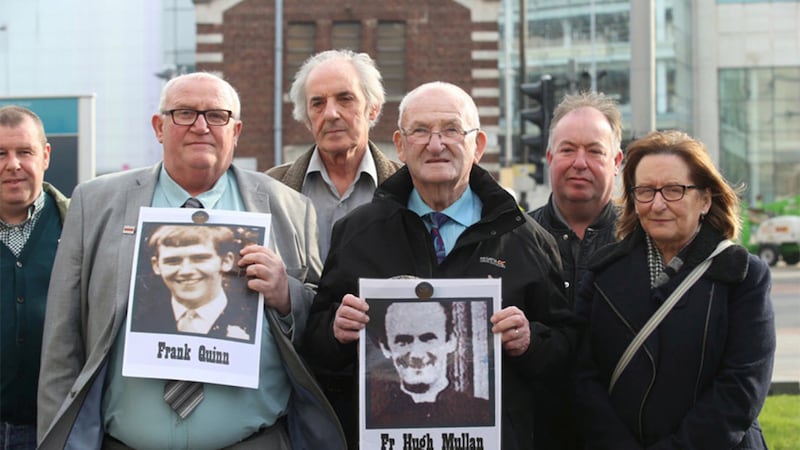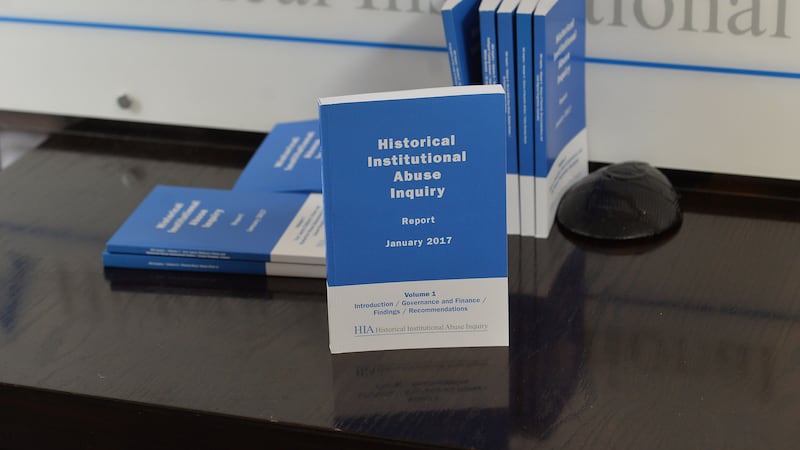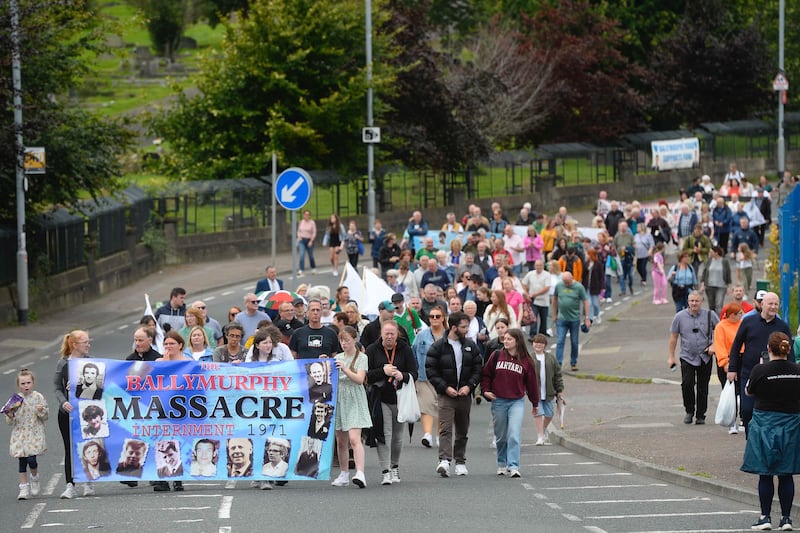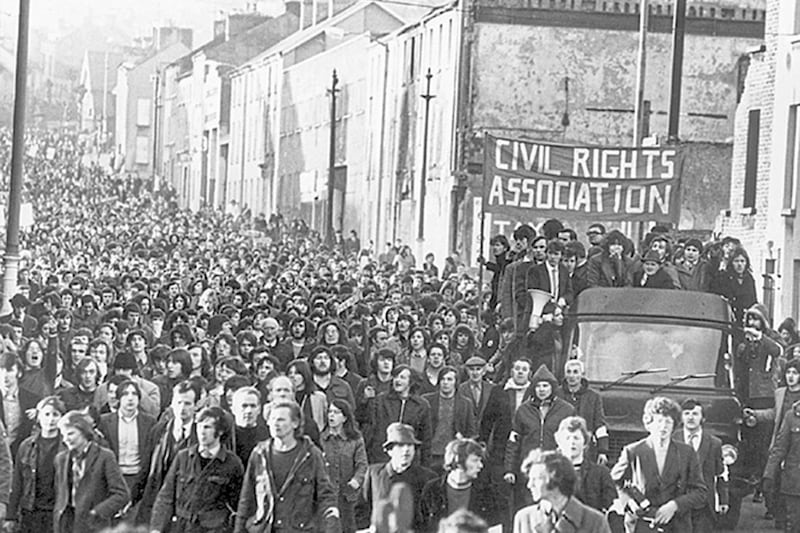THE people of Ballymurphy should have been protected by British soldiers during a shooting incident in west Belfast in 1971 - but instead hid fearing a massacre, an inquest has heard.
Eilish Meehan was 19 on the evening of August 9, 1971 as she helped evacuate children from the Springfield Park area close to a developing flash-point within the mainly loyalist Springmartin area.
She told an inquest that people in the area had come under attack by loyalists and some had gone to the nearby Henry Taggart barracks to ask for protection.
As the shooting intensified, she found shelter with a number of others close to flats in Moyard.
Priest Fr Hugh Mullan (38) and teenager Frank Quinn (19) were both killed by bullets.
Ms Meehan said news of Fr Mullan's death spread like wildfire among those sheltering from the gunfire, sparking fear of a massacre.
"We thought we were going to be overrun, we thought we were going to be massacred," she said.
"We had nothing to fight back against these crazy people shooting at us and we didn't know why.
"I hadn't a clue why we were being shot at, I am a citizen, I expect protection, people had gone down to the Henry Taggart barracks to ask for protection, that protection never came."
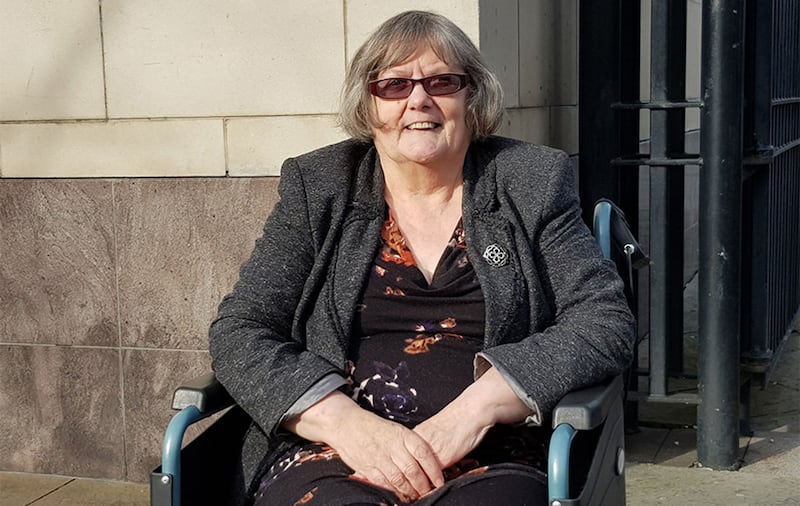
Ms Meehan was giving evidence to an inquest which is examining a series of shootings in which 10 people died in August 1971,
The sequence of events started after the introduction of internment in Northern Ireland that year on August 9. Mass arrests sparked widespread rioting.
Over three days, from August 9-11, 10 people died in shootings at a number of locations in west Belfast.
The events have become known as the Ballymurphy Massacre.
Read more:
- Ballymurphy Massacre survivor feels responsible for two who died helping him, inquest hears
- Ballymurphy inquest: Fr Hugh Mullan refused help by British army shortly before he was shot dead
- British soldiers applications for anonymity at Ballymurphy inquests `straight out of theatre of the absurd'
Soldiers have long been held responsible for killing all 10 people, but the accepted narrative became clouded last year when former members of the UVF came forward to claim their organisation was also involved.
Ms Meehan told the inquest that before the shooting started she had seen a number of boys throwing stones at soldiers based at the Henry Taggart barracks in the area, but described that as not unusual.
Later a crowd had gathered at the back of the houses in Springfield Park, Ms Meehan said someone shouted "they are coming in", in reference to loyalists in Springmartin, and there was a single shotgun blast, which she described as a "warning shot".
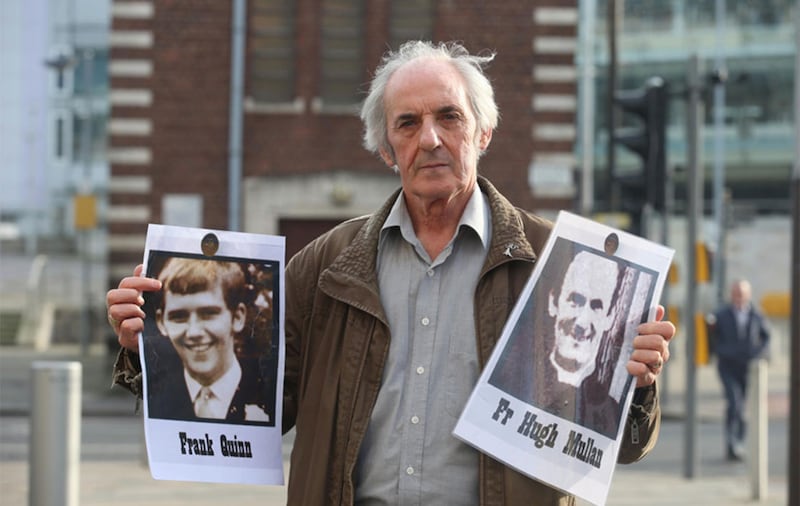
She said she did not see who fired the shotgun in Springfield Park, but said she overheard someone say it was a legally held gun used for hunting.
Ms Meehan described the main shooting event that evening as "crossfire" with shots coming from two directions, including from people lying on top of flats in Springmartin.
She said she initially believed loyalists were behind the gunfire directed at the Springfield Park area, but over time she now believes both soldiers and Loyalists were involved because of how the shots sounded, explaining that those who lived in Belfast at that time got used to hearing different types of shots.
Soldiers at that time mainly used high velocity SLR rifles.
"I thought it was loyalists were firing on us," she told the inquest.
"Now I think it was a mixture of loyalists and security forces mainly because of the type of the weapons being used. At that time there was a lot of gunfire, you got to know the different types of rifle fire.
"I think mostly it was SLR."
The inquest continues.
